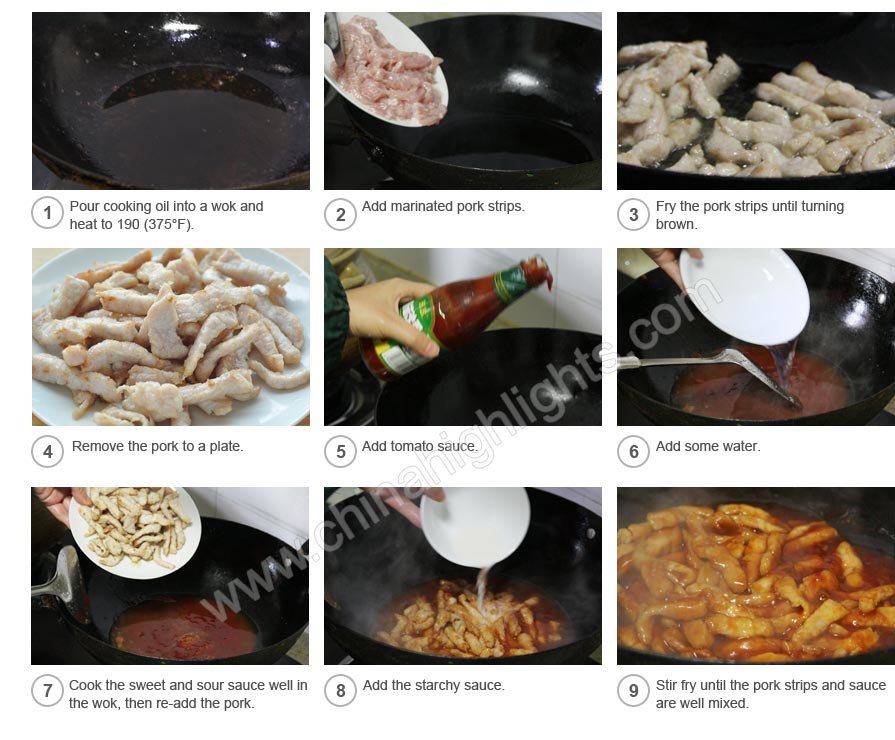One of the classic dishes of the Han people (90% of Chinese), sweet and sour pork is included in Zhejiang cuisine, Shandong cuisine, Sichuan cuisine, and Cantonese cuisine, of which the Shandong-cuisine style is the most popular.
- Chinese: 糖醋里脊 táng cù lǐjí /tung tsoo lee-jee/
Sweet and Sour Pork Nutrition
The tenderloin is the most tender cut of pork. It is very rich in protein and contains fat and some trace elements, such as calcium, phosphorus, thiamin (vitamin B1), iron, and niacin (vitamin B3).
The hemoglobin in the tenderloin can allay anemia. Much more effectively absorbed by humans than the iron contained in vegetables, it’s favored by Chinese people (for whom anemia is more prevalent than in the West).
Ingredients and Seasonings
Main ingredients: 200g pork tenderloin, 1 egg, water
Seasonings: 2g salt, 5g white sugar, 10g light soy sauce, 10g starch, 30g tomato sauce, 10g vinegar, coriander

Preparation
1. Crack the egg into a bowl. Separate the egg white and yolk.

2. Slice the pork tenderloin into strips.
3. Prepare the marinade using a pinch of salt, one teaspoon of starch, two teaspoons of light soy sauce, and an egg white.
4. Marinade the pork strips for about 20 minutes.
5. Put the remaining starch in a bowl. Add some water and vinegar to make a starchy sauce.

Cooking Instructions
1. Pour the cooking oil into a wok and heat to 190°C (375°F). Add the marinated pork strips and fry them until they turn brown. Remove the cooked pork from the wok and place on a plate.
2. Leave some oil in the wok. Put the tomato sauce and white sugar into the wok, and heat until the oil and sauce are fully combined.
3. Add some water to the wok and thoroughly heat the sweet and sour sauce before adding the pork strips to it.
4. Pour in the starchy sauce. Stir-fry all the ingredients until the pork and sauce are thoroughly mixed together.
5. Serve on a plate and add some coriander for decoration.

